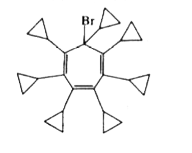n
lines are drawn in a plane such that no two of them are
parallel and no three of them are concurrent. The number of different points
at which these lines will cut is
a. n−1∑k=1k
b. n(n−1)
c. n2
d. none of theseSolution in Bengali
Step by step video & image solution for n lines are drawn in a plane such that no two of them are parallel and no three of them are concurrent. The number of different points at which these lines will cut is a. sum_(k=1)^(n-1)k b. n(n-1) c. n^2 d. none of these by Maths experts to help you in doubts & scoring excellent marks in Class 11 exams.
Updated on:21/07/2023Topper's Solved these Questions
Similar Questions
Solve loglog2(x2)(x2−10x+22)>0.
View SolutionIf a coin is tossed n times, then find the probability that the head appears odd number of times.
View SolutionThe value of |[a,a+d,a+2d] , [a+d,a+2d,a+3d] , [a+2d,a+3d,a+4d]|+|[b
View SolutionThe correct order of size among Br^(+), Br, Br^(-)
View Solutionn∑r=1(ar+br),a,b∈R+ is equal to :
View Solution1) Fragmentation () a) Planaria br 2) Unripe fruits () b) Yeast br 3) Desire () c) Spirogyra br 4) Reproduction () d) Watermelon br
View Solutionవేర్ల ద్వారా శాఖీయోత్పత్తి జరిపే మొక్కbr i) డాలియాbr ii) ముల్లంగిbr iii) క్యారెట్br iv) క్యాబేజిbr
View Solution[" Which alkyl bromide will yield only one alkene upon "E_(2)" elemination? "],[[" 1) "," ( "" Br "," 2) "," Br "" 3) "," Br "," ( "" ) "," ( Br "]]
View Solutionn lines are drawn in a plane such that no two of them are parallel and no three of them are concurrent. The number of different points at which these lines will cut is a. n−1∑k=1k b. n(n−1) c. n2 d. none of these
View SolutionMycorrhizal association is responsible for br a- Increasing absorptive area, br b- Providing shelter to fungi, br c- Nitrogen fixation, br d- Enhanced supply of N, P, S
View SolutionWite down the corresponding elements in the figure : 1)……………… br 2)…………… br 3).……………. Br 4)………….. Br 5)…………. Br 6)…………..

View SolutionConsider the following modified structures in plants and select ontogenetically similar structures, br A. Phyllode in Acacia, br B. Thorn in Citrus, br C. Tendril in watermelon, br D. Cladode in Asparagus, br E. Spines in cacti
View SolutionThe reaction, CH2=CH2+Br2→CH2Br−CH2Br is an example of:
View Solutionn∑r=1(ar+br),a,b∈R+ is equal to :
View SolutionIn the given compound, will Br ionize in the form of (a) Br^(-) or (b) Br^(+) .
View SolutionIn the given compound, will Br ionize in the form of (a) Br− or (b) Br+.

View Solution
